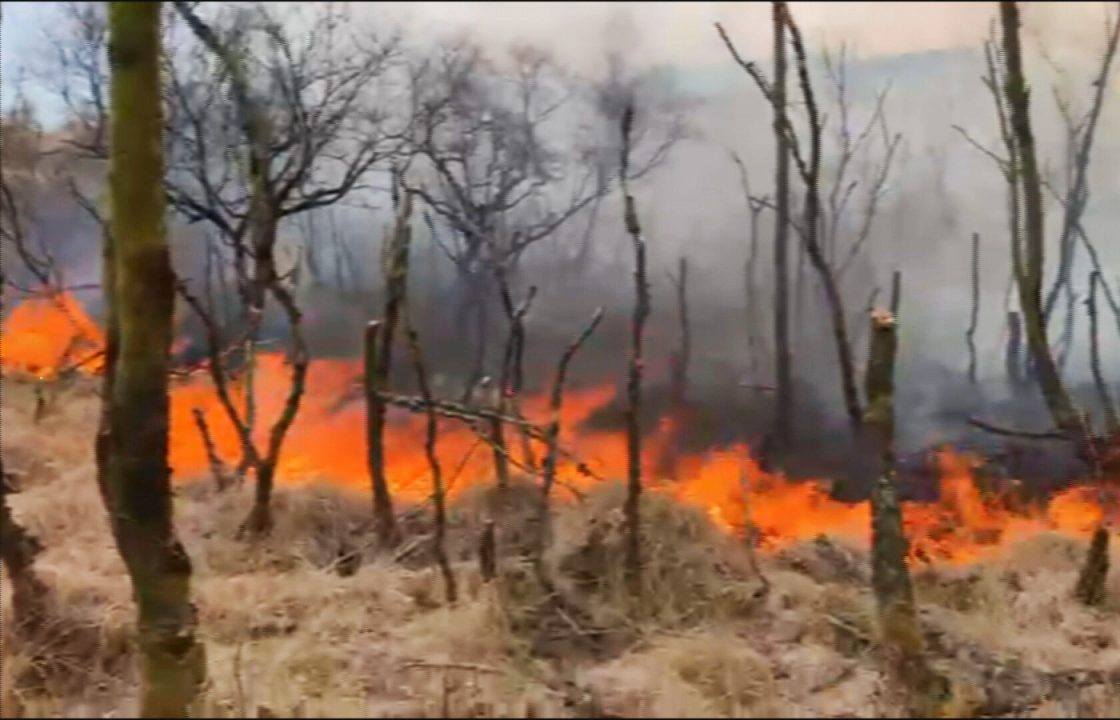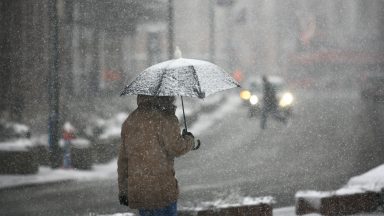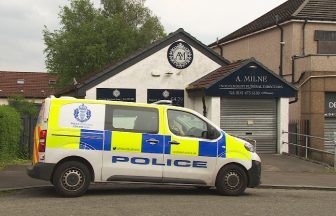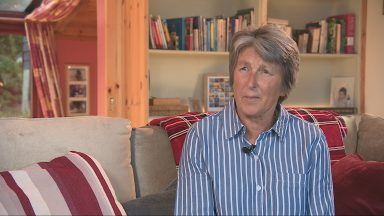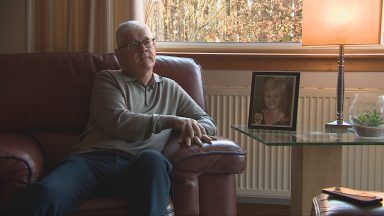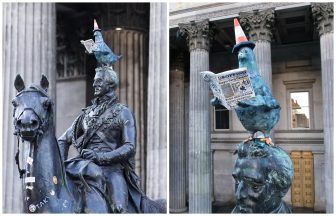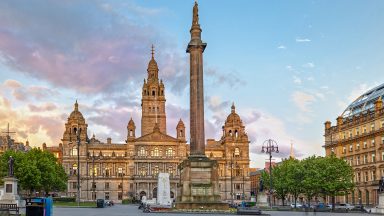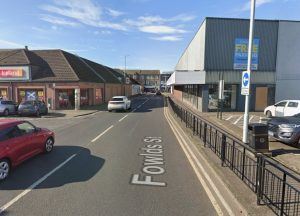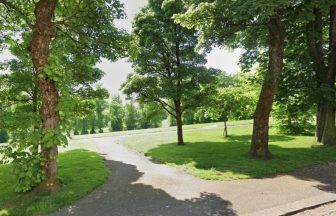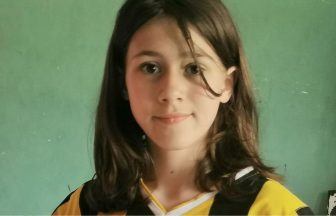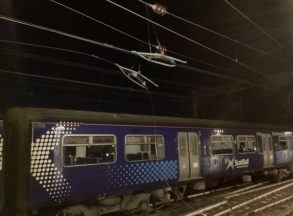A community forest is working to regenerate after a wildfire raged for five days on the Isle of Bute.
Emergency services were first called to reports of a grass fire off the A844 on Bute on April 8.
The fire raged for at least five days after it first broke out, with crews working to make the area safe.
Samuel Lindsay, forest ranger and ecologist for Bute Community Forest, previously spoke to STV News while he helped efforts to keep the blaze in check.
Mr Lindsay went out into the forest with a beater to try and extinguish flames and keep the fire’s border in check.
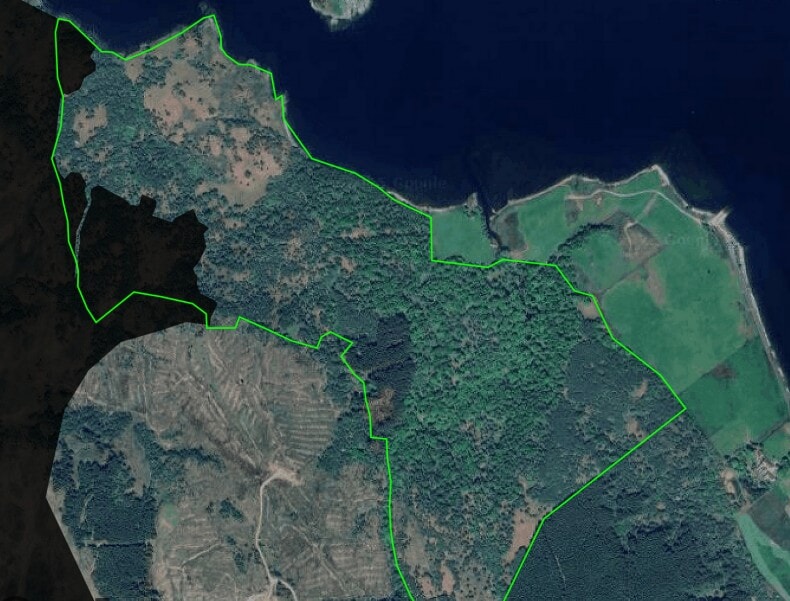 STV News
STV NewsOver a month on from the blaze, he and the Bute Community Forest team are assessing the damage and plotting a way forward for the area.
“It’s an ancient oak woodland, a site of special scientific interest for its ground-nesting birds which won’t be returning this year, they won’t be returning at all!
“You can’t help but feel for every living thing – every insect, frog, newt, vole, mouse… all these things that can’t escape.”
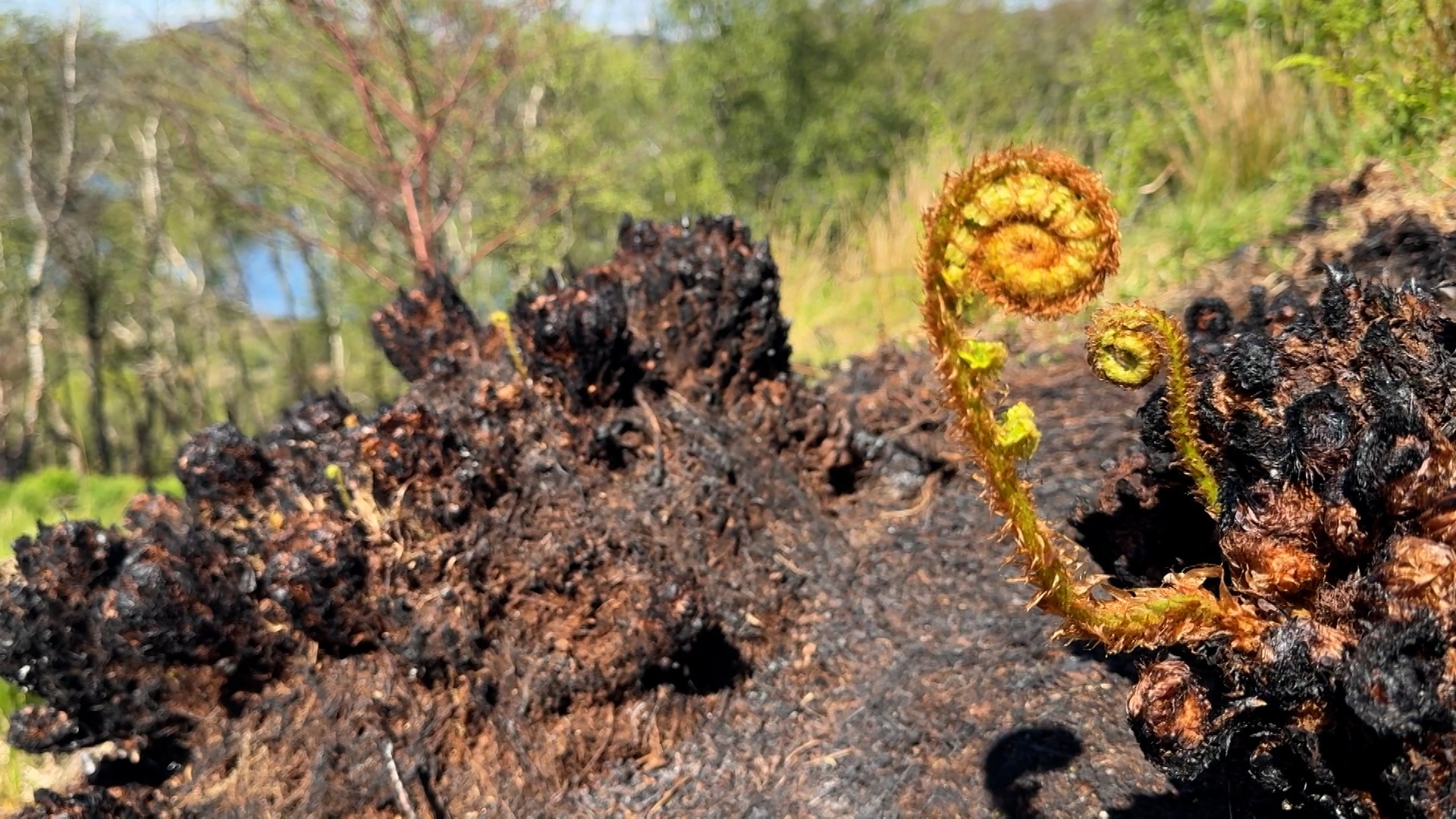 STV News
STV NewsFires have hit the community forest three times in the last decade, with each blaze stripping away layers of the biodiversity and vibrant landscape people come year round to visit.
Richard Whitcomb, chair of Bute Community Forest, said the forest lost around eight hectares to the blaze.
“The fire affected 10% of our old oak woodland and 5% of our woodland overall,” he said.
He added that following the devastation the team has grown and had an increase in supporters.
“We’ve been engaging with the community and funders have been keen to support us which has been incredibly rewarding,” he said.
Mr Whitcomb urged the public to be mindful of their place in the environment.
“If it’s been a dry spell, be extra careful,” he said.
Life such as green shoots are starting to sprout from the scorched earth but but much of what’s coming back is of little ecological value.
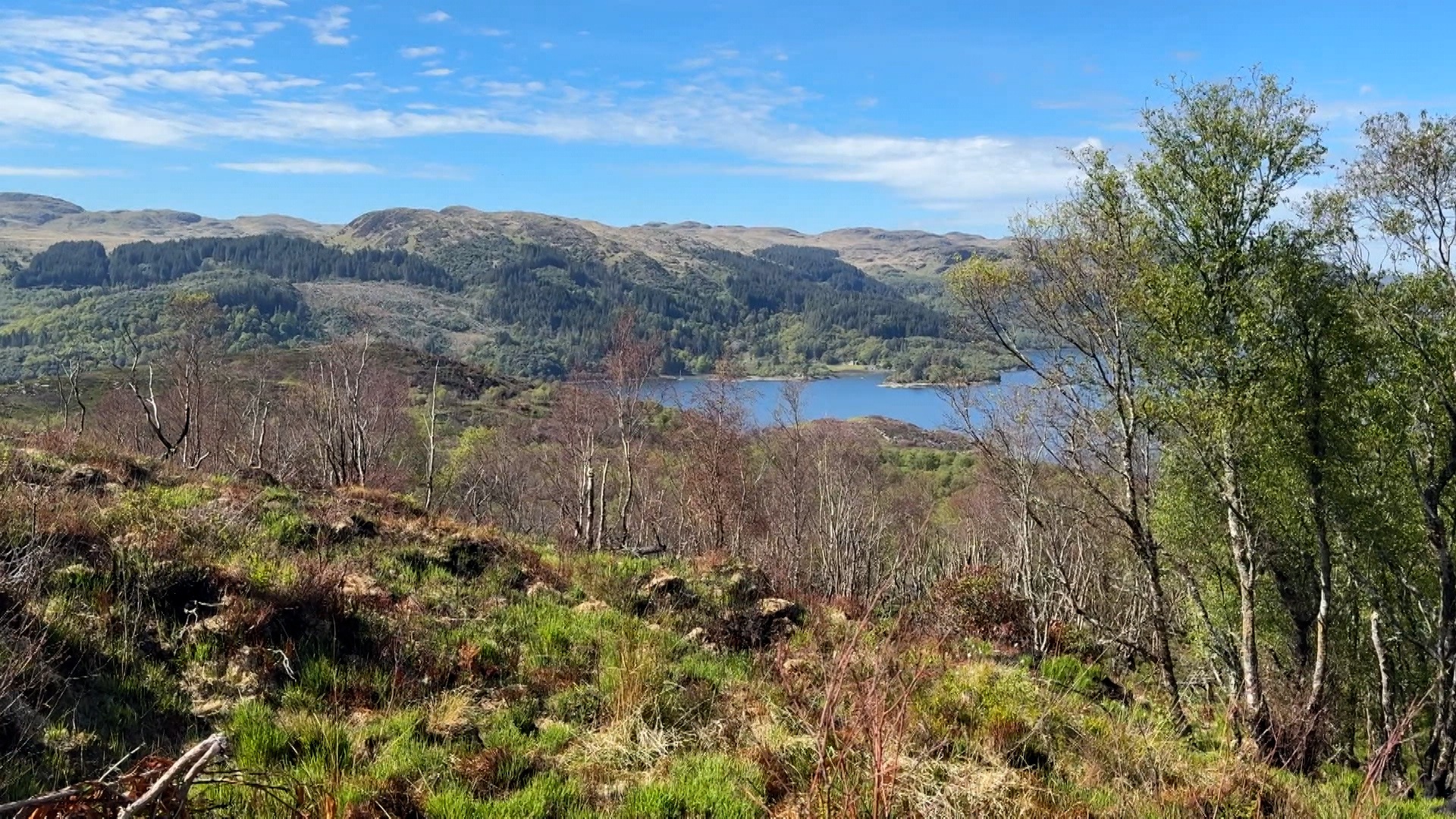 STV News
STV News“The greening process happens quickly… but it’s usually the invasive species or things with lower ecological value, it’s the bracken and bramble,” Mr Whitcomb continued.
“Unfortunately, what we lose is those that require a lot longer to establish and things that have been here for hundreds of years, they take a long time to come back.”
Mr Whitcomb added that the wildlife will have been affected in ways that will be hard to comprehend.
“Obviously you can hear the birds singing but it’s hard to estimate what you’re not hearing or seeing as a result of fire damaged land,” he said.
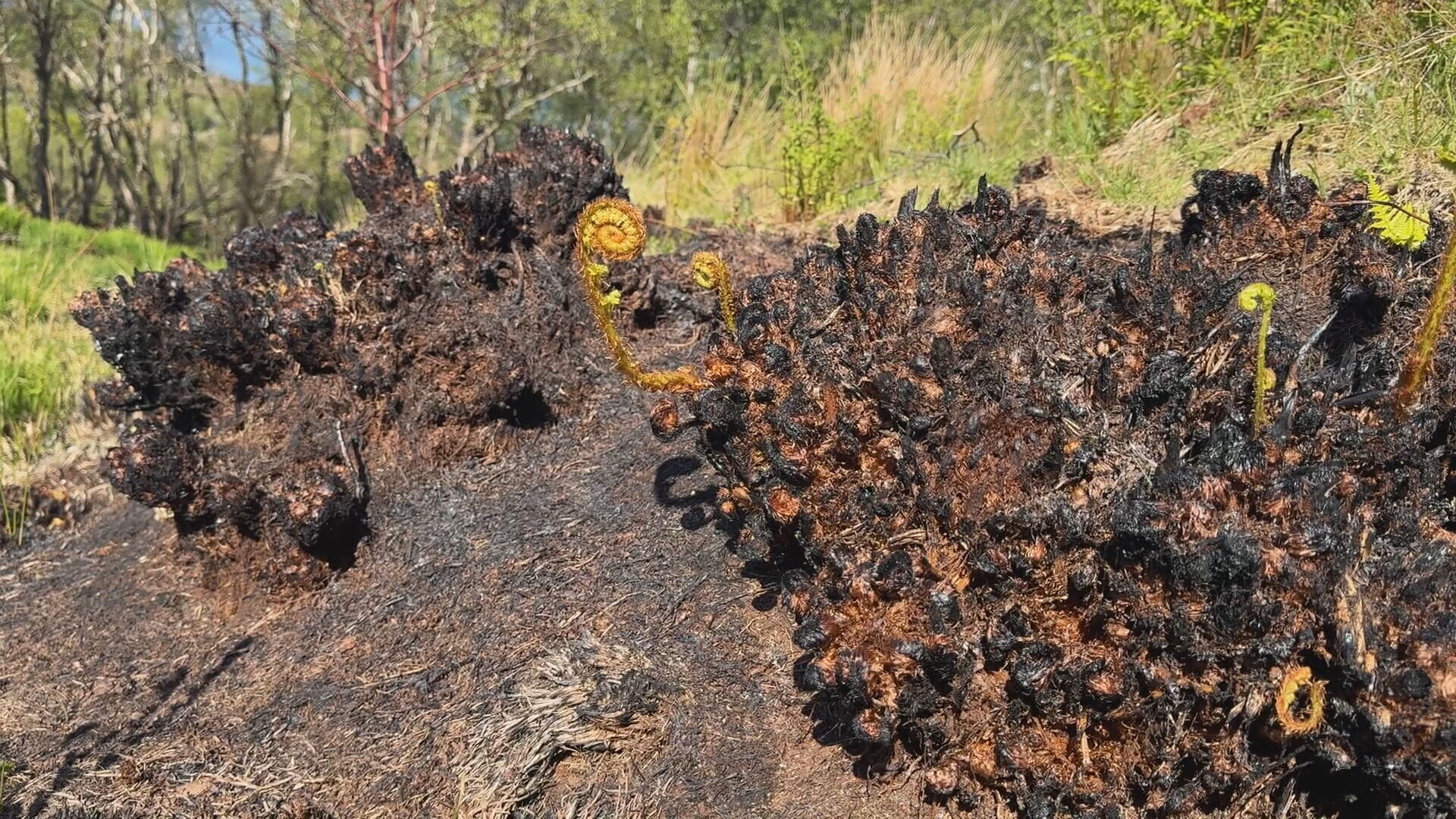 STV News
STV NewsAmie Dow, heritage coordinator for Bute Community Forest, said every blaze has simplified the ecology of the forest.
“Unfortunately this area of Balnakailly has been hit by fire three times now in the last ten years, and every time fire hits the environment it simplifies the ecology, which means there’s a serious reduction in the number of species,” she said.
“There is a chance that some of the trees will survive, because they have roots and they’re underground, but we’re likely to have lost our lichen and bryophites, because they don’t have roots so they’re entirely exposed to fire damage.”
She added: “If NatureScot came today, it wouldn’t meet the criteria for SSSI status… but it can be restored, with translocation from other rainforest sites.”
Mount Stuart Trust, which is the custodian of 87% of the Isle of Bute, is making plans for the future and exploring stronger protective measures again the fires.
Katie Warden, head of rural operations at Mount Stuart Trust, said: “This earlier warmer weather is potentially going to become more prevalent as time goes on, so we are reviewing our prevention measures.
“We’re past muirburn season anyway, so tenant farmers couldn’t do that, but we’ve been on a wildfire ban – any burning – since April.”
She added that the team are doing extra checks and making sure they have an emergency response protocol ready to go should a fire start.
Many wildfires are caused by human behaviour, and have burned vast stretches of land across Scotland this spring.
The Scottish Fire and Rescue Service is urging all communities to avoid naked flames during periods of extreme risk.
Follow STV News on WhatsApp
Scan the QR code on your mobile device for all the latest news from around the country


